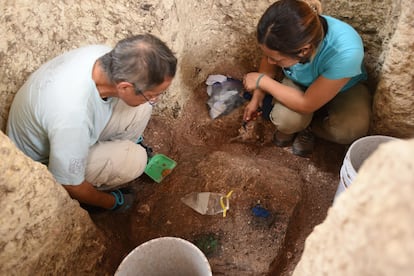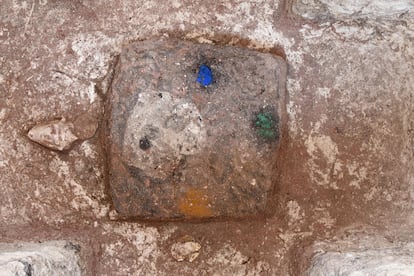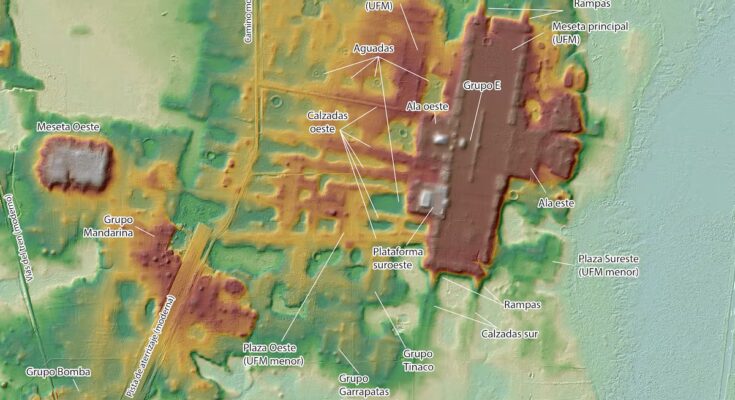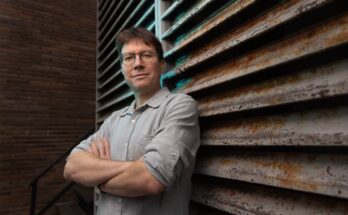A few years ago, one of the largest constructions in Mesoamerica and the largest in the Maya region was discovered in southern Mexico. It is a huge platform raised between 10 and 15 meters above the ground, with 1,413 meters from north to south and 399 meters from east to west which was intended to function as a large plaza. The discovery was possible thanks to LIDAR technology, a laser that dig almost all hidden. Now, at the center of the structure, they found a representation of the Universe as conceived by those peoples who it is not known whether they were Maya or not. Furthermore, by expanding the LIDAR focus, they found another, even larger cosmogram, the edges of which extend kilometers away from the center. The authors of the discovery, the details of which are published Advances in sciencethey also defend that, unlike other large monuments, the one in Aguada Fénix was erected by hundreds of people voluntarily.
Aguada Fénix is special, different, for many reasons: in addition to being huge, it is a series of horizontal monuments. Facing the verticality of the pyramids, a platform dominates here which must have been like a large elevated square. Next to the Ceibal site, it is among the oldest buildings in the area. The ceramics present there contributed to dating it; its construction must have begun around 1050 BC. This means that they built the central plaza between 800 and 1,000 years before the large Mayan cities. It is so ancient that the authors of its discovery refuse to consider it a Mayan monument, whose civilization was emerging just then.
“Being there, on the ground, it is not currently visible. You can see some mounds that you know were made by humans, but you don’t identify this large rectangular platform that basically constitutes an open space, a large square,” explains Verónica Vázquez, an archaeologist at University College London (UK) and co-author of the new research. “It’s not as tall as a pyramid in Palenque or Tikal, it’s more of a massive, monumental, but horizontal architecture that gets lost in the landscape,” adds Vázquez. At the center of what today appears as a hill, LIDAR indicated where to open up the land.
“In the center of the platform we have an architectural group that has another elongated platform to the east and a mound, like a small earth pyramid, to the west,” explains the researcher. This configuration is known by archaeologists as group E and serves “among other things to observe the movement of the sun on the horizon, standing on the western hill, you will see how the sun rises in the east and in certain periods of the year it rises right in the center, on the central axis”, explains Vázquez. Those moments are exactly February 24 and October 17, with intervals of 130 days, that is, half of the Mayan ritual calendar. During the excavations, researchers found a series of ritual deposits that would form a cosmogram, a representation of the Universe in miniature.
But by broadening the focus, LIDAR technology shows the true monumentality of Aguada Fénix. The nine roads guessed in the first works and which started from the central platform, now extend there for several kilometers. The longest ends 6.3 kilometers away. From above, the laser reveals an entire hydraulic system with a series of channels 35 meters deep and five meters wide connected to a nearby lagoon for fear of a dam. And when the gaze expands to the maximum, a new cosmogram emerges: we observe that the whole of Aguada Fénix has a cross plan, with a north-south axis and an east-west axis.
“The cosmogram presents itself at different levels,” explains in an email Takeshi Inomata, an archaeologist at the University of Arizona (United States) and leader of the group that discovered and continues to excavate Aguada Fénix. “On a small scale, it’s represented by the deposits in the center.” In the so-called group E, several cavities were found, always cruciform, with offerings or elements painted with different colours. These are the oldest colorful archaeological remains found so far in Mesoamerica. In the cultures of the region, certain colors were reserved to mark the four cardinal points. “On a larger scale, the entire site constituted a cosmogram, with the north-south and east-west axes represented by roads, corridors and canals. This tells us that the entire site was designed according to a coherent plan,” says Inomata.

Classical archeology defended an almost fixed idea on the origin of monumentality in antiquity: the great constructions of the past were built by sedentary societies, with an agrarian base, but urban centrality and with a marked social hierarchy that resorted to forced labor. This is how the pyramids of Egypt, the Babylonian ziggurats, and many Mayan temples were built. The existence of the coherent plan that Inomata speaks of seems easier in this type of social organization. But Aguada Fénix contradicts all this.
“It must be said that some people lived in Aguada Fénix all year round,” Inomata says. But they were specialists, probably responsible for following the passage of time or the rites that were celebrated on the large platform according to the agricultural calendar. “However, large numbers of visitors probably only came at certain times for construction work and ceremonies.” The researchers estimate that lifting just 3.2 to 4.3 million cubic meters of soil from the central platform took 10 to 13 million person-days. “This is really surprising, but there are other examples in different parts of the world. This shows us that people without a marked hierarchy, based on sedentary lifestyles, could carry out large-scale constructions”, concludes the archaeologist from the University of Arizona and first author of the new study on Aguada Fénix.
The evidence that there were hundreds, perhaps thousands, of individuals who voluntarily built Aguada Fénix is rather indirect. At that time, no large cities or organized societies yet existed in the Maya lowlands. Then the Olmec culture flourished, very hierarchical, but hundreds of kilometers away. In the region surrounding the complex, communities began to settle thanks to the cultivation of corn, but they still led a semi-nomadic life. Furthermore, among the earth of the large square, the researchers found clays of different origins, but not random, but rather distributed by sectors. As if the members of each community who attended wanted to leave the mark of their people.

“We believe that the inhabitants who built Aguada Fénix and other contemporary complexes were probably very nomadic and were not organized sociopolitically in a hierarchical way,” Daniela Triadan, Inomata’s colleague at the University of Arizona, explains in an email. They base this belief on the fact that, after eight years of research and excavations, “we have found no permanent domestic structures, much less elite residences such as palaces,” adds Triadan. Nor have any sculptures been found representing human figures in general, much less rulers, which contrasts with the neighboring Olmec culture, which had a very hierarchical society.
In a scientific article entitled Early Maya monumentalismTriadan proposes an idea different from that of classical archaeology. The archaeologist recalls that sites like Aguada Fénix are designed for the participation of the people, unlike the pyramids and temples, which are reserved for the elite. The possibility exists that it was the construction of these community ritual sites that laid the foundations for the complex societies that would come later, and not the other way around.
Vázquez, the archaeologist at University College London, sums it up this way: “It would seem that there’s only one way in which you start out as a small village and then you grow into a city and then you already have a hierarchical structure without which you can’t do these kinds of large-scale monumental projects. What we have now and not just in this case of Mesoamerica, but in other parts of the world, is that there are other ways of doing things.”



